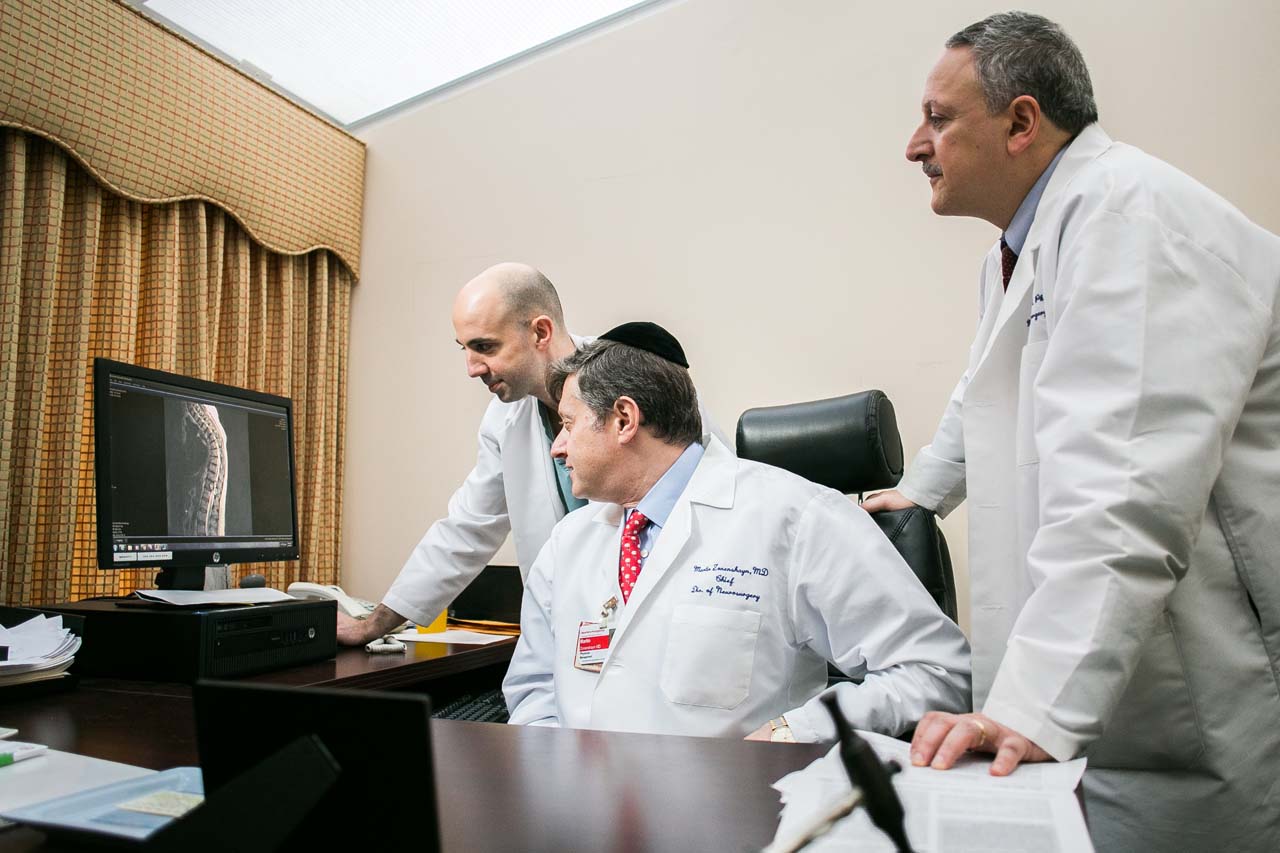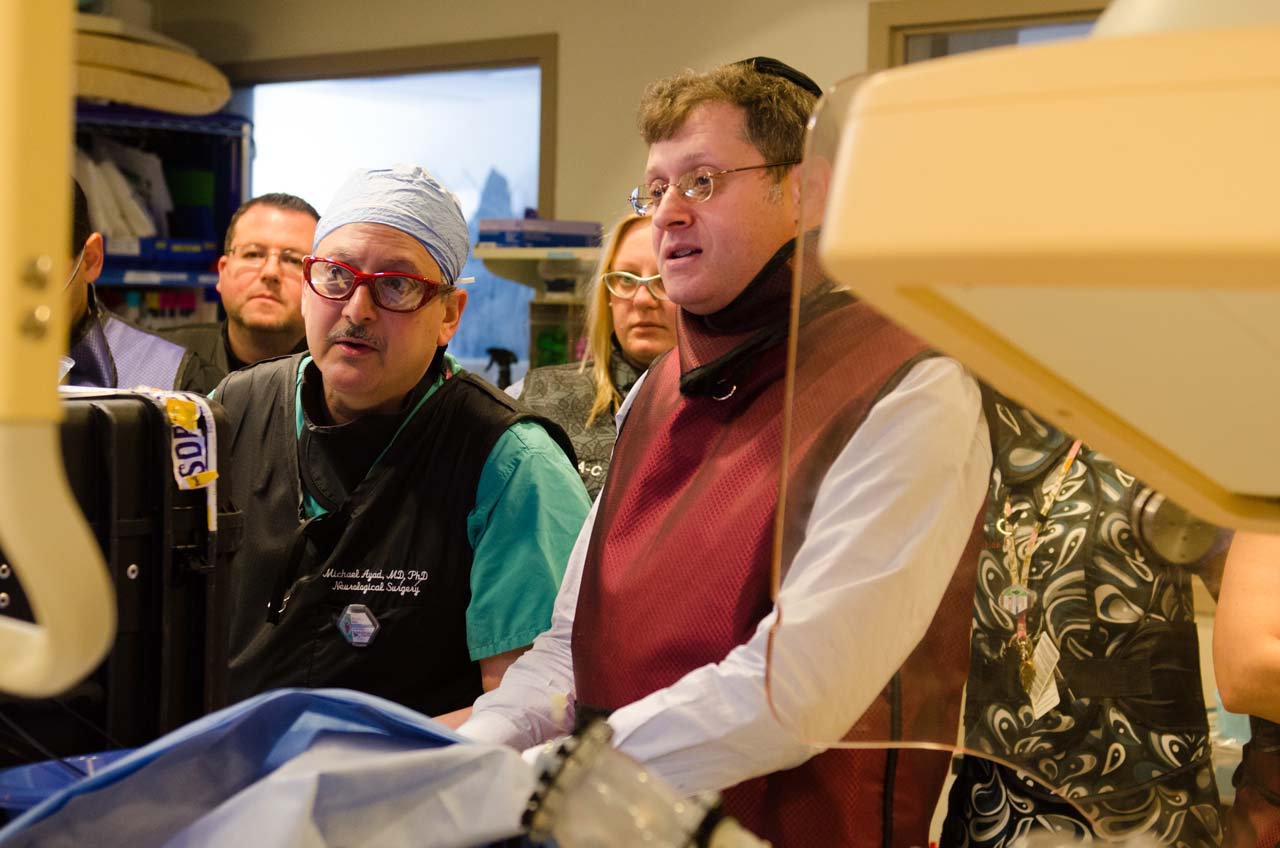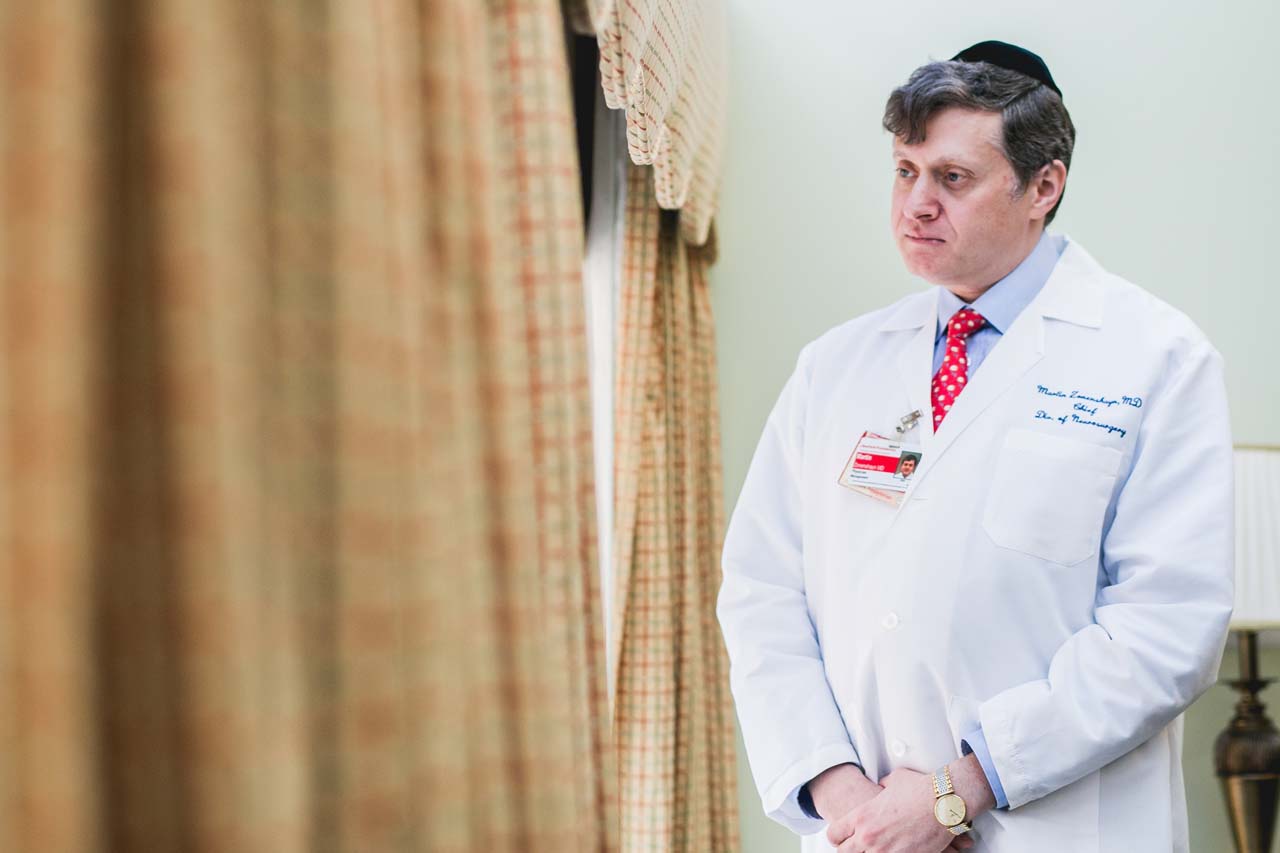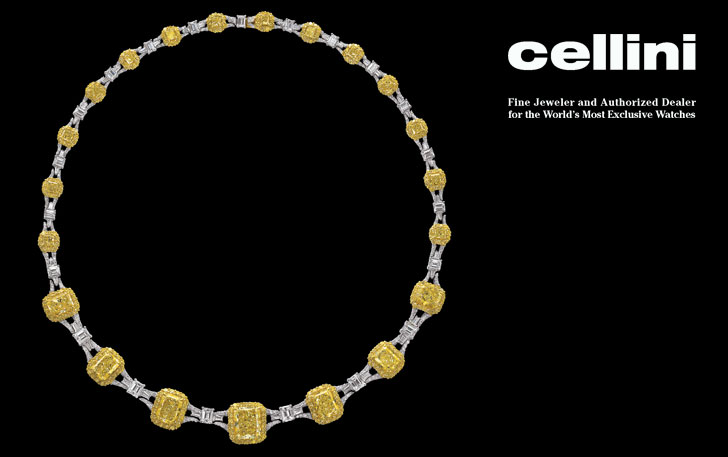A lifelong fascination with computers, tools, data, and “simply how things work” propels the life and career of the chief of the Division of Neurosurgery at NewYork-Presbyterian Brooklyn Methodist Hospital
By megan schade • photos by alex gordon
It was fascination with how things worked that turned Martin Zonenshayn, med student, into Martin Zonenshayn, M.D., F.A.C.S, chief of the Division of Neurosurgery at NewYork-Presbyterian Brooklyn Methodist Hospital.

“I was in medical school at New York University, and I wanted to spend the summer doing some research,” said Dr. Zonenshayn. “Given my engineering background, I asked the chairman of the Department of Physiology and Biophysics if there were any computer-intensive research projects available. He pointed me to his magneto encephalography lab and I was instantly hooked. I was fascinated by the high-speed computers, the methods of data collection, the advanced mathematical modeling tools, and most importantly, the fact that the actual work could someday help improve the lives of patients suffering from neurological diseases. Soon, all of my free time—summer vacation and winter break included—was spent in the lab.”
Real world applications,cause and effect, concrete outcomes and benefits—this is what drove Dr. Zonenshayn to study medicine. After receiving an undergraduate degree in chemical engineering at Columbia University, he knew that he needed to be on the “applied” side of science and felt that medical school would best satisfy both his curiosity about how things work and the desire that his work lead to a positive tangible result. He subsequently completed a residency at NewYork-Presbyterian’s Weill Cornell Medical Center and returned to New York University to complete a fellowship in stereotactic and functional neurosurgery.
Functional neurosurgery focuses on the surgical treatment of neurological disorders and conditions such as Parkinson’s disease and other movement disorders, epilepsy, and chronic pain. Because functional neurosurgery requires extremely fine measurements, stereotactic surgical techniques are used.

Stereotactic neurosurgery involves the use of images to create a three-dimensional coordinate system that pinpoints, with extreme precision, the location in the brain needing treatment. Because the treatment area is so precisely targeted, small, minimally invasive incisions can be made for procedures like implantation of a device or biopsy of a tumor, with minimal tissue damage to surrounding areas.
After completing his fellowship, Dr. Zonenshayn began focusing on cases utilizing stereotactic techniques, such as deep brain stimulation (DBS) for Parkinson’s disease and essential tremor. DBS involves the implantation of electrodes into the region of the brain that contributes to the impaired movement that may accompany certain neurological conditions. The electrodes are placed using a stereotactic brain navigation system. They then send continuous electrical pulses to the target area in the brain, blocking the impulses that cause symptoms.
“Dr. Zonenshayn has created an amazing team, and a dynamic division,” said Michael Zenilman, M.D., chair of the Department of Surgery. “His warm personality and forward thinking intellect have enabled him to develop a wonderful atmosphere here for patients with neurological illnesses and for the people here at NYPBMH who care for them. Quite frankly, Dr. Zonenshayn has made Brooklyn Methodist the best place in Brooklyn for neurologic surgery.”

“We are all, first and foremost, general neurosurgeons,” said Dr. Zonenshayn, of himself and his colleagues in the Division, Michael Ayad, M.D., Ph.D., and Alexandros Zouzias, M.D. “We diagnose and treat conditions having to do with the brain (such as tumors or aneurysms), the spinal cord and spinal column (such as spinal stenosis, herniated discs, and spinal deformities), and associated peripheral nerves. However, we each have our own specialties.
“Dr. Zonenshayn has made Brooklyn Methodist the best place in Brooklyn for neurologic surgery.”
“Michael Ayad, M.D.,Ph.D., our director of endovascular and cerebrovascular neurosurgery, specializes in the diagnosis and treatment of conditions affecting blood vessels in the brain and spine. He is our stroke expert, and, in addition to many other life-saving procedures, he is able to perform a highly advanced stroke reversal procedure that can be effective up to eight hours after the stroke’s occurrence. He is also one of a tiny handful of physicians in Brooklyn who can both use a minimally invasive technique to treat a cerebral aneurysm or, when necessary, treat it using open surgical techniques. Having the expertise in both treatment modalities allows him to choose the best approach for the individual patient.

“Alexandros Zouzias, M.D., is our spine expert, and specializes in minimally invasive lateral access spine surgery, which can reduce the need to cut into muscle to reach the spine. Using minimally invasive and lateral access techniques results in less pain, shorter hospital stays and faster recovery.”
“As with every area of medicine, each case is different because each patient is unique,” said Dr. Zonenshayn. “We all enjoy the challenge that comes with each person we treat—figuring out what isn’t working as it should and how we can fix it to provide our patients with a better quality of life. We also appreciate the variety of cases we are able to see through work with other departments at Brooklyn Methodist. Our Hospital is a certified Trauma Center as well as a Stroke Center, so a fair number of head and spine injuries come through our Emergency Room. A neurosurgeon is always on call to evaluate and begin immediate treatment. We also work closely with vascular surgeons, orthopedic surgeons, neurologists, and numerous other specialists. The workings of the brain, spinal column and surrounding nerves are integrated into a surprising number of clinical fields.”
Even after presiding over the Division of Neurosurgery and returning home to his wife of 25 year and their five children, Dr. Zonenshayn loves to tinker with computers and other devices.
“In my spare time, I do some computer coding,” he said. “For example, I created the appointment and billing system for our office. It works exactly the way we need it to!”
“It works it exactly the way we need it to!” are words Dr. Zonenshayn hopes to say to his patients every day.
NewYork-Presbyterian Brooklyn Methodist Hospital
506 6th Street / 718.780.3000 / nym.org
